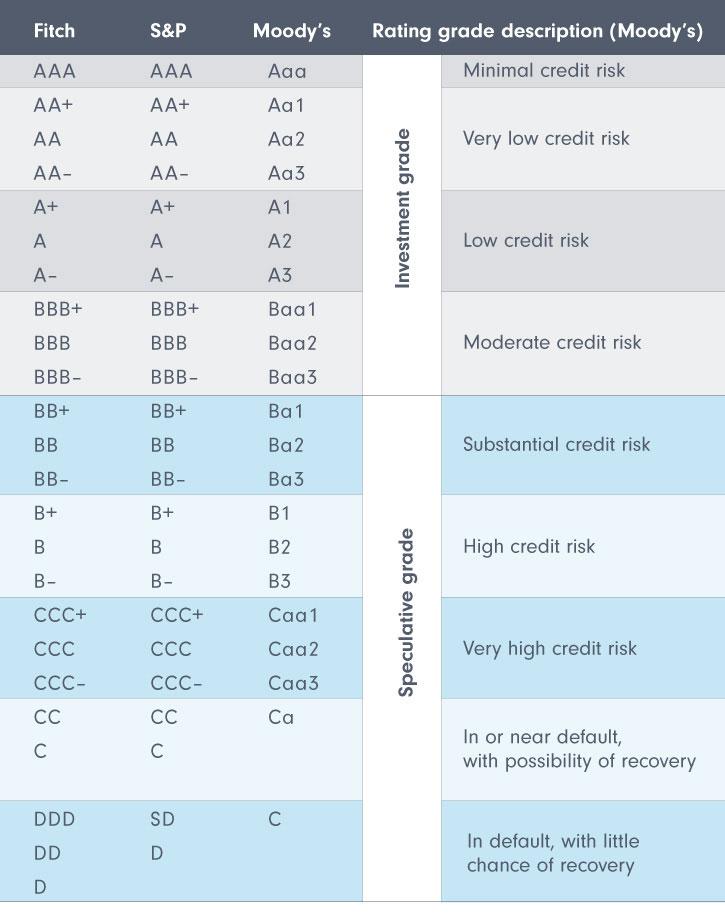In the intricate world of finance, where numbers dance and fortunes are made or lost in the blink of an eye, the ability to foresee potential pitfalls is nothing short of a superpower. Enter the realm of credit risk analysis—a sophisticated art form that transforms raw data into predictive insights, enabling lenders to peer into the future and gauge the likelihood of a borrower defaulting on a loan. This article delves into the heart of this analytical prowess, unraveling the methodologies and technologies that empower financial institutions to make informed decisions. With the precision of a seasoned detective and the foresight of a seer, credit risk analysis stands as the sentinel of the lending world, safeguarding assets and ensuring stability in an ever-volatile economic landscape. Join us as we explore how this crucial tool not only predicts loan defaults but also fortifies the very foundation of modern finance.
Understanding the Foundations of Credit Risk Analysis
In the realm of finance, the art of predicting loan defaults hinges on a deep understanding of credit risk analysis. At its core, this discipline involves evaluating the likelihood that a borrower will fail to meet their debt obligations. To achieve this, analysts delve into a plethora of factors that can influence creditworthiness. Credit scores, income stability, and debt-to-income ratios are just the tip of the iceberg. By meticulously examining these elements, financial institutions can make informed decisions, safeguarding their portfolios against potential losses.
However, the complexity of credit risk analysis extends beyond mere number-crunching. It requires a nuanced appreciation of both quantitative and qualitative data. Key components include:
- Historical Data Analysis: Scrutinizing past borrower behavior to identify patterns and trends.
- Market Conditions: Understanding economic indicators that may affect borrowers’ ability to repay.
- Behavioral Insights: Considering the psychological factors that might influence a borrower’s financial decisions.
By integrating these elements, credit risk analysis becomes a powerful tool, enabling lenders to not only predict but also mitigate the risk of loan defaults.
Harnessing Data Analytics to Forecast Loan Defaults
In today’s financial landscape, the ability to accurately predict loan defaults is crucial for lenders aiming to minimize risk and optimize their portfolios. Data analytics has emerged as a powerful tool in this endeavor, transforming raw data into actionable insights. By leveraging advanced algorithms and machine learning models, financial institutions can now analyze vast datasets to identify patterns and trends that may indicate a borrower’s likelihood of default. This predictive capability not only enhances the decision-making process but also helps in crafting personalized credit strategies.
- Enhanced Risk Assessment: Data analytics allows for a more nuanced understanding of credit risk, taking into account factors such as payment history, credit utilization, and economic indicators.
- Proactive Measures: With predictive insights, lenders can implement proactive measures to mitigate potential defaults, such as adjusting credit limits or offering tailored financial advice.
- Cost Efficiency: By accurately forecasting defaults, financial institutions can reduce the costs associated with bad debt, ultimately leading to more competitive loan offerings.
Integrating Machine Learning for Enhanced Predictive Accuracy
Incorporating machine learning into credit risk analysis has revolutionized the way financial institutions predict loan defaults. By leveraging sophisticated algorithms and vast datasets, these models can identify patterns and correlations that traditional methods might overlook. Machine learning models can process and analyze a multitude of variables, such as payment history, credit utilization, and economic indicators, to deliver a more nuanced risk profile. This enhanced predictive capability allows lenders to make more informed decisions, reducing the likelihood of defaults and optimizing the allocation of resources.
Key benefits of integrating machine learning in credit risk analysis include:
- Improved Accuracy: Machine learning models can adapt to new data, continuously refining their predictions and enhancing accuracy over time.
- Scalability: These models can handle large volumes of data, making them suitable for institutions of all sizes.
- Efficiency: Automation of data processing and analysis reduces the time and effort required, allowing for quicker decision-making.
- Risk Mitigation: By identifying potential defaults early, lenders can implement strategies to mitigate risk and protect their portfolios.
By harnessing the power of machine learning, financial institutions are not only improving their predictive accuracy but also paving the way for more resilient and responsive credit risk management strategies.
Strategic Recommendations for Minimizing Loan Default Risks
In the realm of credit risk analysis, implementing strategic measures is crucial for mitigating the potential of loan defaults. Understanding borrower behavior is a cornerstone; leveraging data analytics can illuminate patterns and trends that predict default risks. Financial institutions should focus on developing a comprehensive risk assessment model that integrates both traditional credit scores and alternative data sources, such as social media behavior and payment histories.
Proactive engagement with borrowers is another vital strategy. Establishing clear communication channels and offering financial counseling can help borrowers manage their debts more effectively. Consider implementing the following tactics:
- Offer personalized loan restructuring options to accommodate financial hardships.
- Utilize predictive analytics to identify at-risk accounts and intervene early.
- Develop educational programs that enhance financial literacy among borrowers.
By embracing these strategies, lenders can significantly reduce the likelihood of defaults, fostering a more resilient financial ecosystem.





